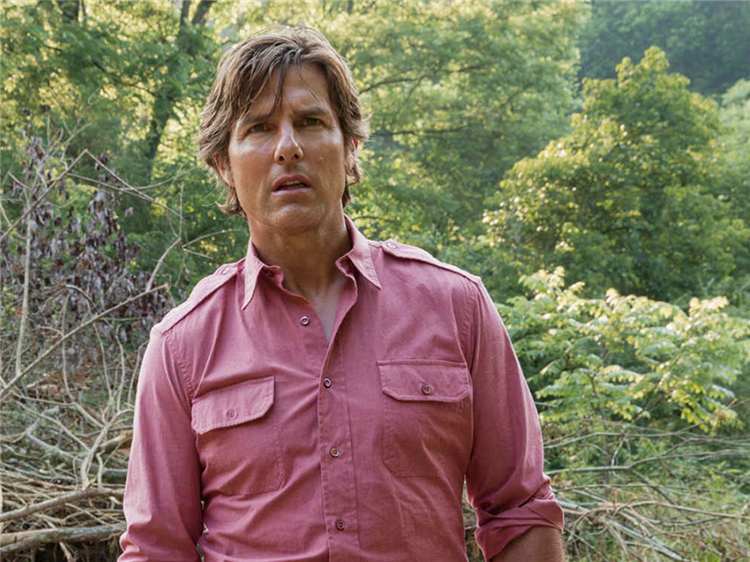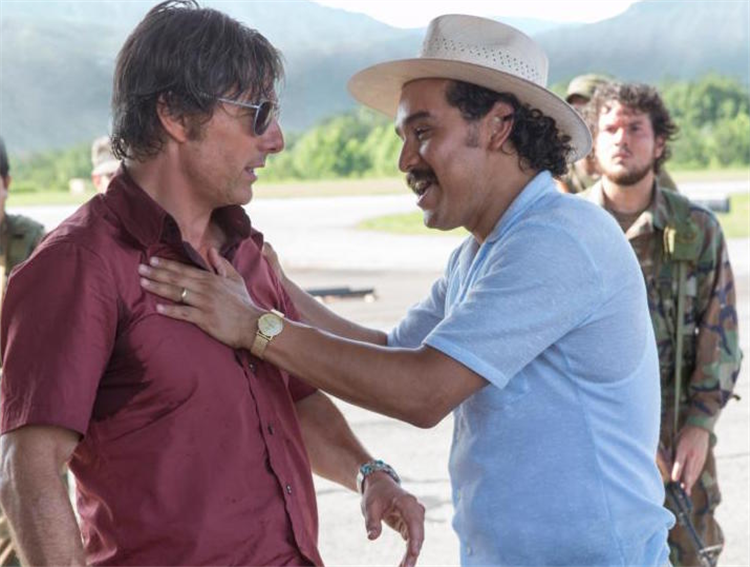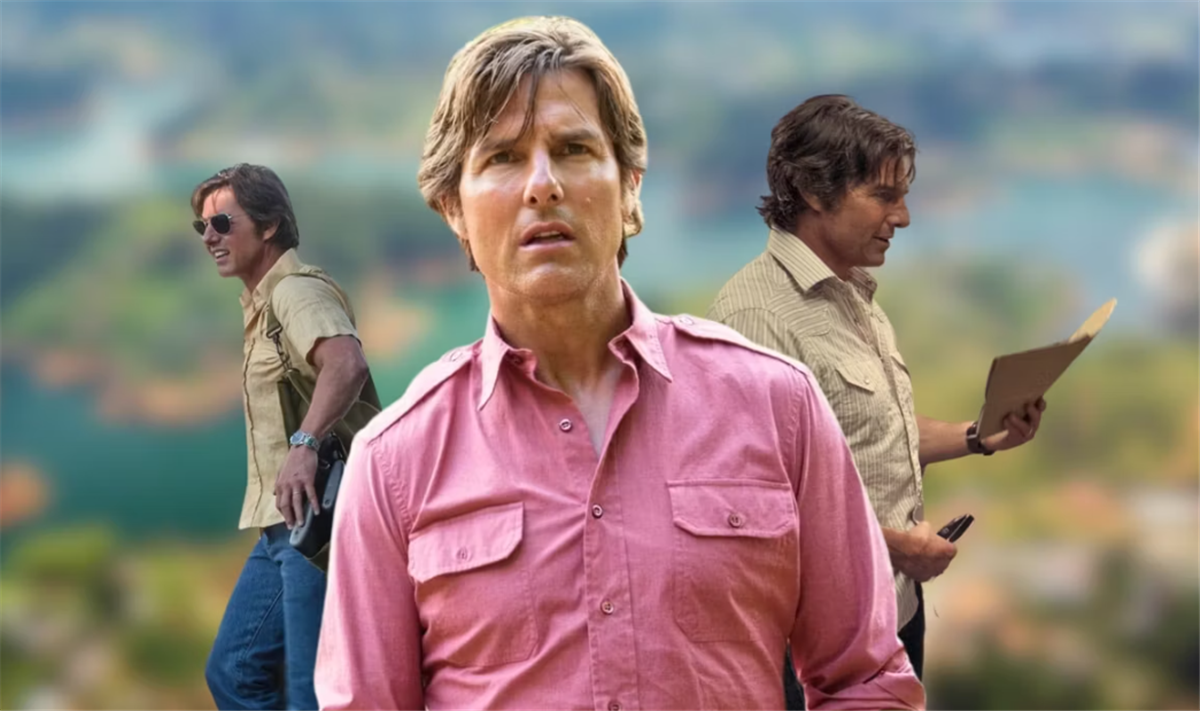Any movie fan not living under a rock is well aware of Tom Cruise’s affinity for aviation. Having attained a pilot’s license in 1994, the 60-year-old actor has put his skills to jaw-dropping use in several films, perhaps most dangerously in Mission Impossible: Fallout and most recently in Top Gun: Maverick. While his role as Pete Mitchell in the latter film and its predecessor remain iconic portrayals of a pilot, his performance as a flying daredevil in another film is also worthy of praise — American Made.
In 2017’s American Made, Tom Cruise played real-life pilot Barry Seal, a man who would turn to drug smuggling in the 1980s. Featuring many aerial sequences and high-altitude stunts, many of which were performed by the actor himself, the film’s production was beset by tragedy on September 11, 2015. Carrying three pilots working on the film, Carlos Berl, Jimmy Lee Garland, and Andrew Purwin, a twin-engine Aerostar 600 crashed while en route through the Colombian Andes. The accident resulted in two deaths and severe lifelong injuries sustained by the sole survivor. But how did such an accident happen? And who would answer to the grieving loved ones filing lawsuits with charges of negligence?
Who Were Pilots Carlos Berl, Jimmy Lee Garland, & Andrew Purwin?
Having grown up among aviators in Venezuela, Carlos Berl followed in his family’s footsteps and became a pilot himself. Eventually relocating to Florida and New York, he amassed a variety of licenses over the years, and in 2015, caught wind of an upcoming Tom Cruise-starring film looking for experienced pilots. Won over by the opportunity, but with a constant eye toward safety, Berl voiced concerns after learning the production wanted him to fly the Aerostar 600, an aircraft with which he had no experience and was infamous among aviators for its involvement in “more than 260 deaths in 191 accidents around the world since 1969.”
A native of Georgia, Jimmy Lee Garland had also never worked on a film. But as a pilot and mechanic running his own aviation company and teaching lessons, his knowledge and experience put him on Hollywood’s radar. In addition to serving as Tom Cruise’s double, Garland also taught the actor how to fly a Cessna 414, noting that his student “liked to participate in the stunts” and was “a very good pilot.” The month before the crash, Garland was in Colombia putting his skills to use, racking up many hours in flight and enjoying the good life in the hotels and casinos of Medellín.
Unlike Berl and Garland, however, Andrew Purwin’s aviation record was not without controversy. Particularly known in the industry for performing helicopter stunts, and having worked on high-profile films like Pirates of the Caribbean, Tropic Thunder, and Transformers, he’d cultivated a reputation among colleagues as a “dangerous” and risk-taking pilot. Purwin was also well-known to the Federal Aviation Administration, though perhaps not for the most reassuring reasons. In 1996, he crashed a helicopter that resulted in the death of a business partner, and would eventually be prohibited from flying fixed-wing aircraft in certain “weather and regulatory conditions.” Purwin was involved in “dozens of incidents” over the years, and according to some in Hollywood’s aviation circles, was even a member of the so-called “death pool,” a group composed of pilots considered likely to lose their lives in a plane crash.
What Happened on the Set of ‘American Made’?

As cameras were rolling on American Made in Colombia, Berl, Garland, and Purwin were tasked with flying the twin-engine Aerostar 600 from Santa Fe de Antioquia to Medellín after a long day of filming. Embarking on what should’ve been a 35-mile flight lasting just 20 minutes, the trio took off around 5:30 P.M., only moments after Tom Cruise had departed the set in a helicopter. According to initial reports, the Aerostar encountered bad weather and crashed near the village of La Clarita.
Upon discovering the wreckage, local civilians found all three pilots alive, though severely injured. But after summoning help and returning to the downed plane, Carlos Berl and Andrew Purwin had perished. The lone survivor, Jimmy Lee Garland, suffered “a shattered vertebra, collapsed lung, herniated diaphragm, 10 broken teeth, broken ribs, a broken jawbone and a cracked skull on both sides of a dislodged eye socket.” Waking up in a hospital nine days after the crash, Garland would later claim to have no memory of the flight, who was flying, or how the plane went down.
What Happened After the ‘American Made’ Set Accident?
Many questions were being asked after the tragedy in the Colombian mountains. How could three experienced pilots, each of whom had logged hours over the dramatic terrain of South American jungles and rainforests, end up crashing on a routine flight? What kinds of safety guidelines and industry regulations did the film’s production have in place to avoid such an accident? What, if any, external factors may have contributed to what happened? And perhaps the most crucial question of all, who was flying the plane? With survivor Johnny Lee Garland unable to remember anything about the flight and its demise, it appears the question of who was flying the Aerostar will never be answered.
The loved ones of Carlos Berl and Andrew Purwin filed lawsuits, each citing negligence on the part of the film production and making claims regarding shortcuts taken at the expense of overall safety. Filed a year after his death, the suit on Berl’s behalf alleged that American Made’s producers, as well as his fellow co-pilots, pressured him into piloting the notorious Aerostar that he’d not been trained to fly. Filed in April 2016, the lawsuit on Purwin’s behalf made similar allegations against the film’s producers and flight coordinators, claiming that Berl was flying the plane and his inexperience contributed to the crash. For their part, the producers filed a countersuit against Purwin, claiming that his aviation company, Heliblack, supplied the film production with a compromised plane and that the pilot had been dishonest about his qualifications.
Regarding the events immediately preceding the flight, an anonymous source noted, “Apparently there was an argument about needing to leave immediately, even though they had some information about the weather that they should have stayed behind. I was just told there was intense pressure to get out as soon as possible.” Another source, an experienced Colombian pilot, acknowledged, “I fly there regularly, and I would have stayed on the ground that day. You have to have experience to fly in Colombia. You cannot fly here like you fly in Miami, where there’s not a mountain anywhere. If you fly in South America, you have to be very trained in the conditions.”
In April 2019, more than three years after the accident and a year-and-a-half after American Made hit theaters, the legal battles came to an end. According to Variety, the litigation was resolved in an undisclosed settlement between the plaintiffs and the film’s producers. While it may never be known exactly why the Aerostar went down, or who was flying the plane in the first place, the tragedy behind the 2017 film shined a sobering light on the often contentious issues surrounding overall safety, the vetting of individuals, and regulatory processes as they relate to the logistics of film production.
Something Similar Happened on the ‘Top Gun’ Set

As tragic as it was, the accident associated with American Made wasn’t the first of its kind on a film starring Tom Cruise. Renowned pilot Art Scholl, 53 years old and known for his stunt work in Hollywood and air shows, was flying a Pitts Special biplane to capture footage for Top Gun in 1985. While in an inverted flat spin over the Pacific, Scholl suddenly radioed, “I’ve got a problem here.” Moments later he crashed into the ocean, and though debris was recovered, neither the full wreckage nor Scholl’s body was ever found authorities. Much like the events leading to the deaths on American Made’s production, a level of mystery and speculation will forever shroud the accident involving Scholl, only further confirming the inherent risks and danger that come with efforts to capture thrilling aerial feats on film.
